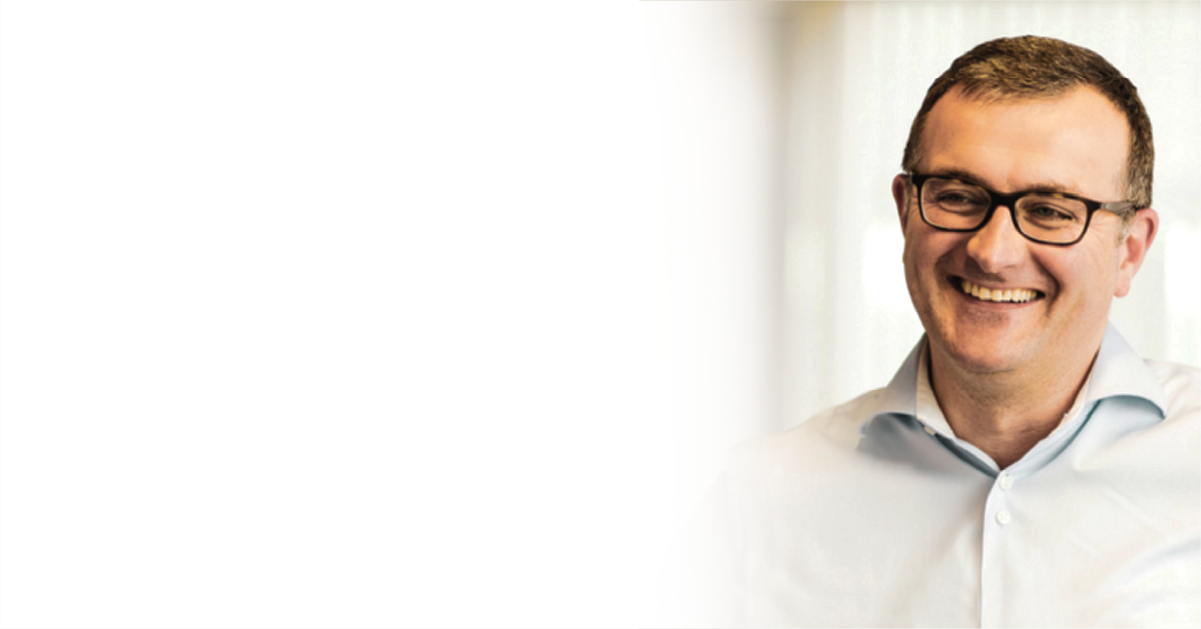As many organizations continue to search for balance in the new digital landscape, leaders are faced with the mammoth task of managing both technological and cultural change. We speak to Dennis Mulder, CTO of Microsoft Netherlands, on leveraging data in digital transformation and the crucial role of leadership in creating a smooth transition to hybrid work.
Many businesses are still finding their footing in the hybrid work environment. How can leaders ensure a successful transition into the hybrid work model?
The pandemic and change of expectations of a hybrid setup have changed the landscape quite dramatically. Companies that have gone through a digital transformation before the pandemic are really thriving now in this new world.
But with a lot of economies opening up now, I think many companies are still looking for the right balance. How much work do you do from home? What do you expect from people? How does that play into the technology that you need?
You want to be inclusive of the people who are working remotely and that’s hard if the majority are physically in the office. So that’s it, figuring out that balance and what it means for companies.
I think the key here is that leaders need to lead by example. They have to show that sometimes, it’s ok not to be in the physical meeting room. Showing how the balance works out for them and being a little bit vulnerable about their own struggles is going to help bring comfort to people to make the decisions that fit them best.
What challenges do organizations face when transitioning to a distributed enterprise? How can leaders overcome these challenges?
What we call the digital transformation process – where more processes and products rely on digital technology – is, in many ways, also a cultural change. People need to do things differently. And in general, people are open to change and are willing to change but they do not want to be changed. So, telling them to change does not always work.
I firmly believe leaders need to lead by example, as I said. But another key area is to address the cultural change and take the time to make it a process.
PROSCI is a change management methodology that talks about what people need to change. The fairly famous acronym is ADKAR – awareness, desire, knowledge, ability, reinforcement. So, why are we making the change in the first place? Why do I have to change? What do I have to know to change? Do I have the right skills?
Procedures and processes are really changing. So cultural change requires a process to drive that change.
How can businesses leverage technology to support this move towards a distributed enterprise approach?
In general, we don’t have enough developers to fulfill the needs of tech for all these companies. There’s a war for talent and companies have a hard time retaining tech talents. So, we need to adopt tools to enable more people to develop or build software.
If your enterprise developers focus on exposing the data on building APIs to access core systems, often called systems of record, then you can do systems of engagement – more on the faster apps and web app experiences and other similar things.
Customers also want to see innovation sooner, so if you have more people focus on those in an agile way, building on top of the core systems of record, provided that they are thoroughly thought through by enterprise developers, we can get more done. We can automate more processes ourselves instead of just relying on the IT Department.
And for that, you have a lot of platforms for rapid application development, or what they call robotic process automation platforms. Low code is what it’s often called as well. These tools in our portfolio are really needed to support this move to this distributed enterprise.
What should businesses focus on when implementing cloud computing in their digital transformation process?
Cloud is a key foundation for the entire digital transformation. It is foundational because it allows you to level up. It allows you to focus on functionality over raw computing. It will make you more agile.
But what you have to do before you broadly adopt it is to think it through. I always make an analogy with a city. If you want to build a city – in this case, the city is your application portfolio in the cloud – you do need to have electricity, sewers, roads, and utilities. If you just let people go to swipe their card and do some cloud, you will get a lot of integration issues and a lot of dead roads and dead-end streets.
So, you need to have a central governance organization that hands out access to the cloud based on the knowledge that the receiving team will have autonomy but stay within the guardrails or rules of the company. It’s about finding the right balance between autonomy versus speed.
In cloud, you’ve outsourced many things to the cloud vendor. There’s a shift in responsibility and that requires governance. Same with low code platforms. You do need to govern what goes where. It’s tempting to jump right in, but you’ll shoot yourself in the foot if you do.
How can organizations use data and technology to enable growth and ensure resilience amid global disruptions?
Data is the new oil, or data is the new gold, right? That’s what a lot of people say.
The way I look at it is we have this notion called a digital feedback loop – the prongs are engage customers, optimize operations, empower employees, and transform products. Data is produced in all four areas, but all four areas can be strengthened with data from the other areas.
For example, Tesla collects a lot of data from the car and their product in order to improve their manufacturing and customer support processes. So how can we take data out of a certain product to make employees better, for example?
There are some bridges to cross, though, because often the operational data is owned by someone else. Same for product or customer data. This gets into data governance across the enterprise. It is another area that requires investment.
Ultimately, combining these data sets and applying AI on top of it can get you a competitive advantage if you think it through well. Data becomes the centerpiece that you use for data-driven decision-making.
What are some key trends in technologies for 2022 and 2023?
A lot of companies are on this digital transformation journey. To me, it’s about how we can accelerate that. This is where things like AI and low code platforms come into play. How can we transform the entire organization to embrace technologies to drive change?
From that perspective, it’s more about organizational change in many ways. As a CTO, you would argue that I probably talk about tech all the time. But most of my conversations with customers and my equivalents in large enterprises are about how we can transform the organization and people, about changing people and how they think about things instead of the next great piece of tech.
It’s still about people-process-tech. We’ve been saying that for many years. But I think it’s also about data. I talk about people-process-tech-data as being the core thing to think about and not seeing them in isolation. Instead, connect them to really become successful with cloud and open-source platforms.
Sometimes mindsets are blocked. In certain organizations, a CISO department may restrict access in an attempt to reduce risk. But that’s the wrong way. To take the analogy with the roads, of course, you can enter but we keep you safe with guardrails and other capabilities. Quite a few companies are struggling with finding the right balance.
How can they overcome that hurdle?
I firmly believe leaders need to lead by example. They must create this fearless organization where experimenting and making mistakes is okay and not punished. Give people enough autonomy to figure things out.
It’s more cultural than it is technological or anything else. I think Microsoft is an example of where that works, and we’re still on that journey. It requires inspirational leadership and good examples.
*The answers have been edited for length and clarity.















